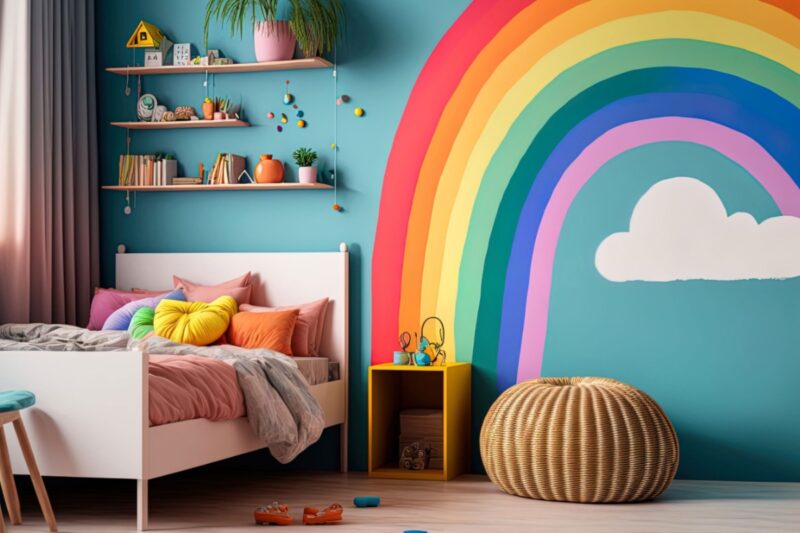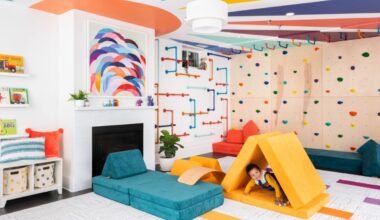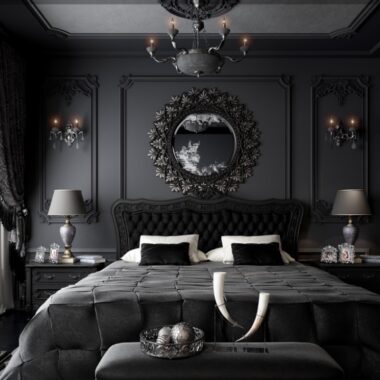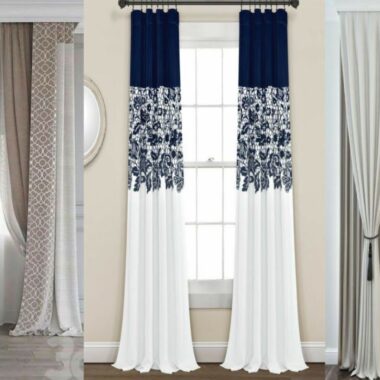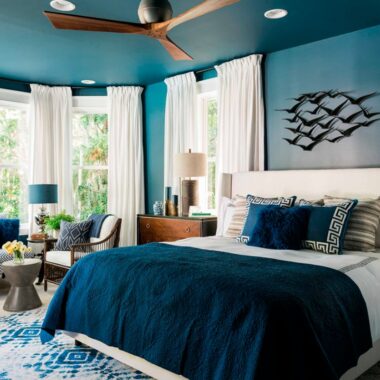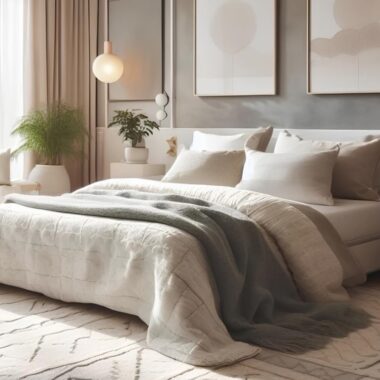Choosing colors for a kids room is exciting but can be tricky. Colors can make children happy, calm, or creative. The right shades can make the room feel cozy, playful, and welcoming.
Parents often want fun boy and girl room color ideas. In this blog, we will share 15 kids bedroom color ideas. Each idea is easy to try and will help make the room special for your child.
How Colors Affect Children’s Moods
Colors have a big effect on children’s moods and energy. For example, yellow makes them feel happy and creative. Blue helps them relax and focus. Green brings calmness and balance.
Choosing the right color can make a child enjoy their room more and help with sleep and learning. Whether you are designing a boy’s room, girl’s room, or a baby room, color matters. Using the right combination can make a small kids room feel larger and more fun.
15 Kids Room Color Ideas That Actually Work
1. Soft Pastel Blue
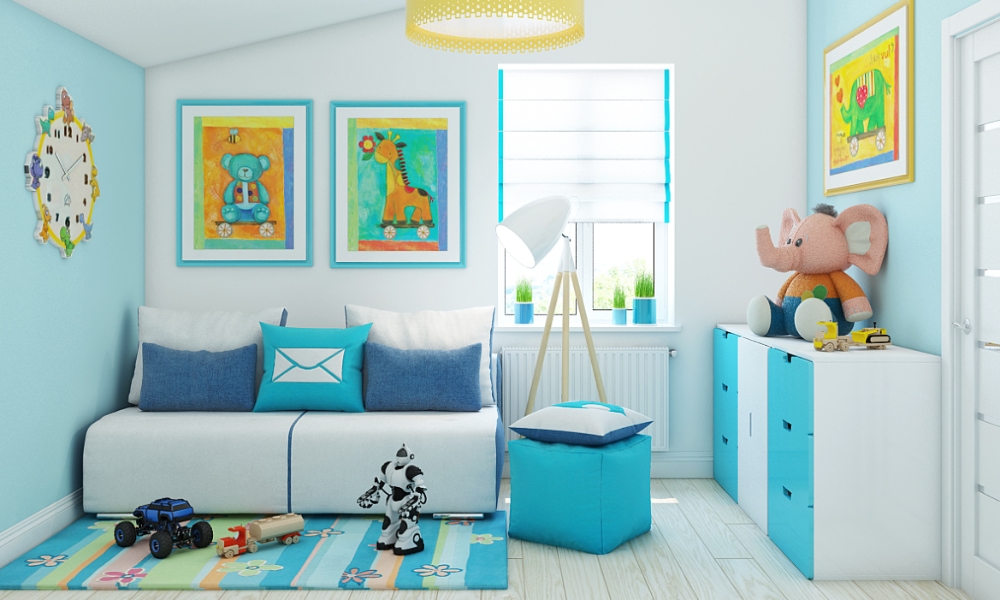
Light blue creates peaceful bedroom environments that help children sleep better. This versatile color works for any age group and grows with kids over time. Pastel blue makes small rooms appear larger while providing a calming backdrop for daily activities.
The color pairs beautifully with white furniture and cloud decorations on ceilings. Both boys and girls respond well to soft blue walls. This shade photographs well and never looks dated.
Light blue also works perfectly in shared bedrooms since it appeals to different personalities. The calming effect helps reduce bedtime struggles naturally.
2. Sunny Yellow
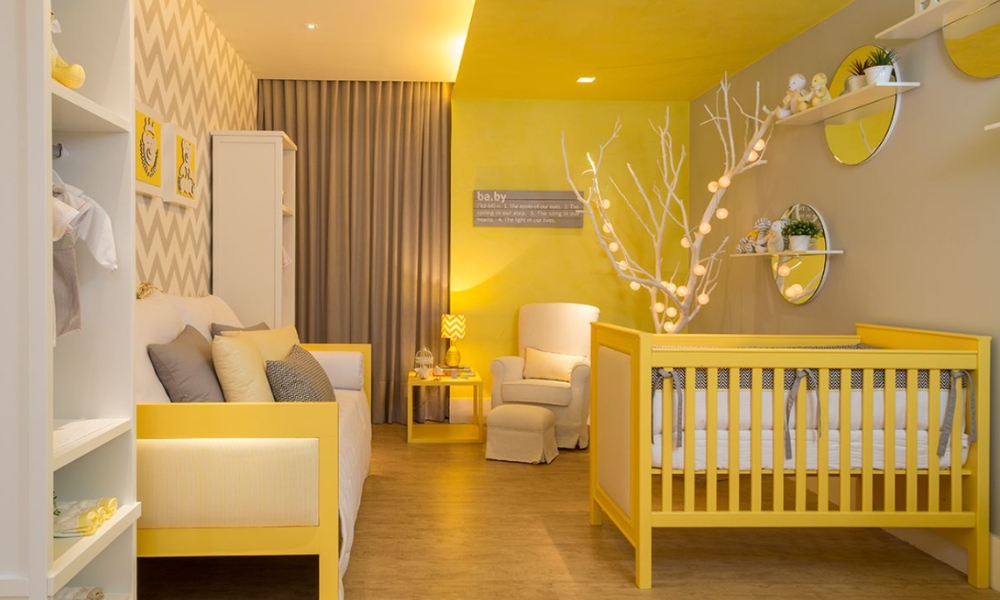
Bright yellow adds instant happiness to children’s bedrooms. This cheerful color works best as an accent wall rather than covering entire rooms. Yellow helps slow-to-wake children start mornings with more energy and enthusiasm.
Balance yellow walls with white trim and neutral furniture to prevent overstimulation. Green plants or blue accessories complement yellow beautifully. This color choice works well for baby nurseries since it’s completely gender-neutral.
Small doses of yellow create warmth without overwhelming young minds. The color also reflects natural light well, making dark rooms feel brighter.
3. Galaxy Wall Art
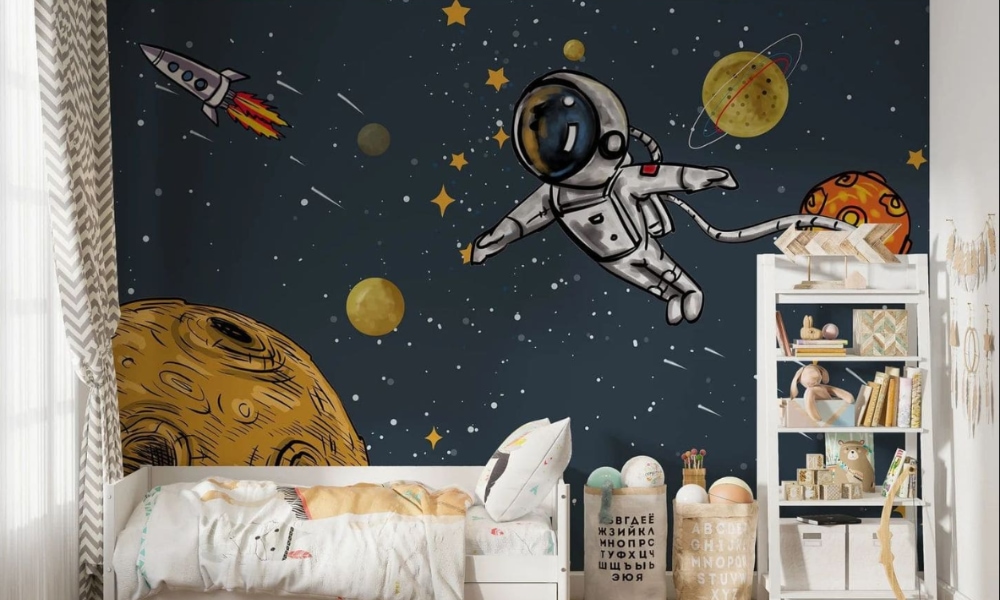
Transform ordinary bedrooms into magical space adventures with dark blue walls and glow-in-the-dark stars. This theme appeals to science-loving children and creates bedtime excitement instead of resistance. During daytime, the room feels sophisticated and mature.
At nighttime, glowing elements provide gentle light that’s not scary. Parents can find affordable glow-in-the-dark stickers at most stores.
The dark background actually promotes better sleep than bright colors. Space themes grow with children from toddlers to teenagers. This option works especially well for kids who resist traditional “baby” decorations.
4. Blush Pink
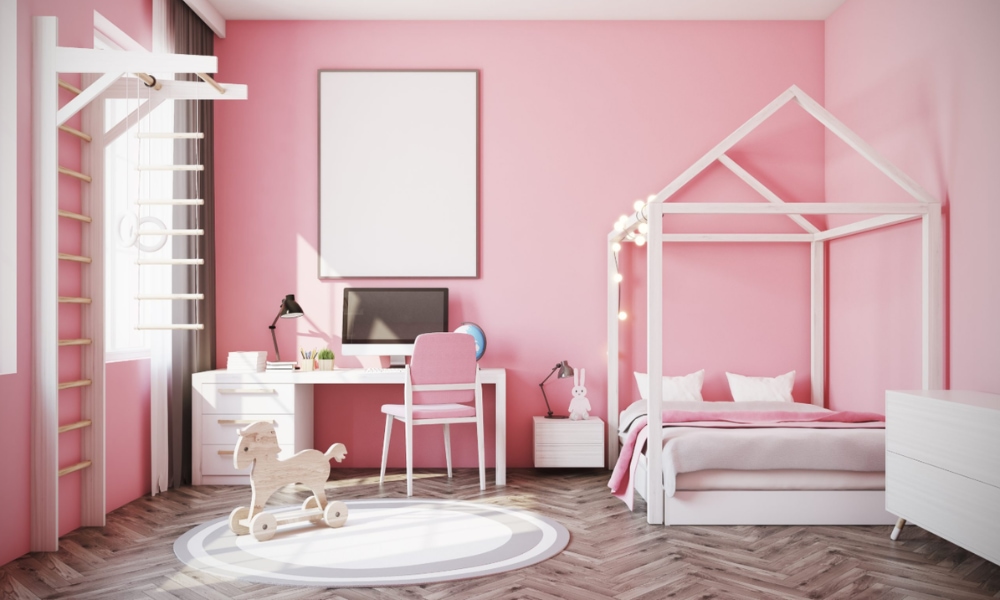
Soft blush pink offers a grown-up alternative to bright pink. This peachy-nude shade feels warm and welcoming without being overwhelming. The color works beautifully in small spaces since light tones make rooms appear larger.
Blush pink pairs perfectly with white furniture and gold accents for sophisticated looks. Even children who typically dislike pink often love this softer version. The shade appeals to wide age ranges, from babies to teenagers.
This color choice provides flexibility since it coordinates with many different decoration styles. Blush pink also creates excellent backdrops for photography.
5. Half Wall Paint
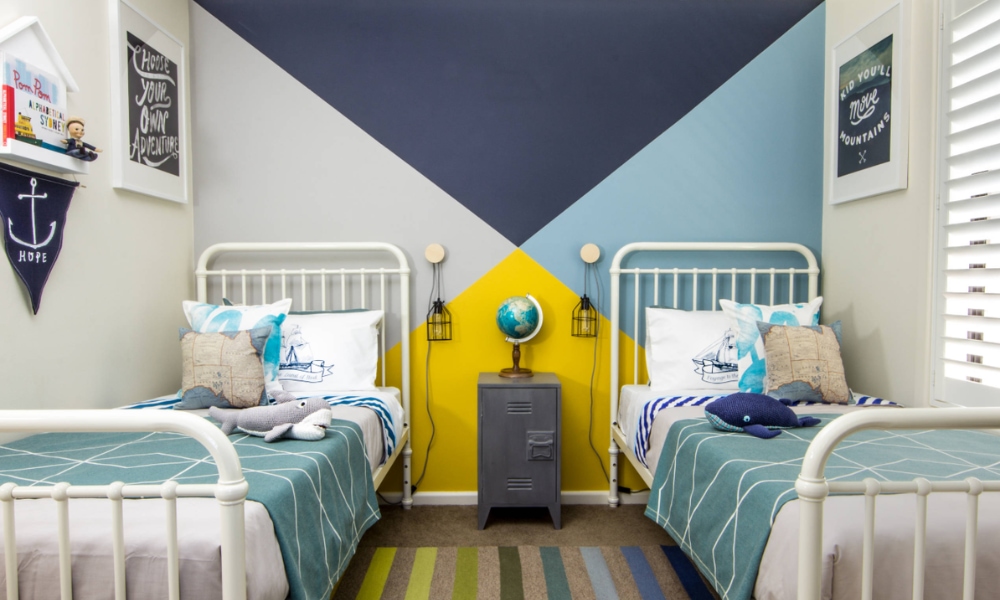
Divide walls horizontally with two complementary colors for visual interest. Paint bottom halves in darker shades and top halves in lighter colors. This technique works especially well for renters who want personality without major commitment.
The darker bottom section hides scuff marks from toys and daily wear. Half-wall painting makes rooms appear taller and more dynamic. Wooden rails between colors create finished, professional appearances.
This approach allows easy updates as children’s tastes change – simply repaint one section. The technique works perfectly in small rooms that need character without feeling crowded.
6. Warm Beige and Neutrals
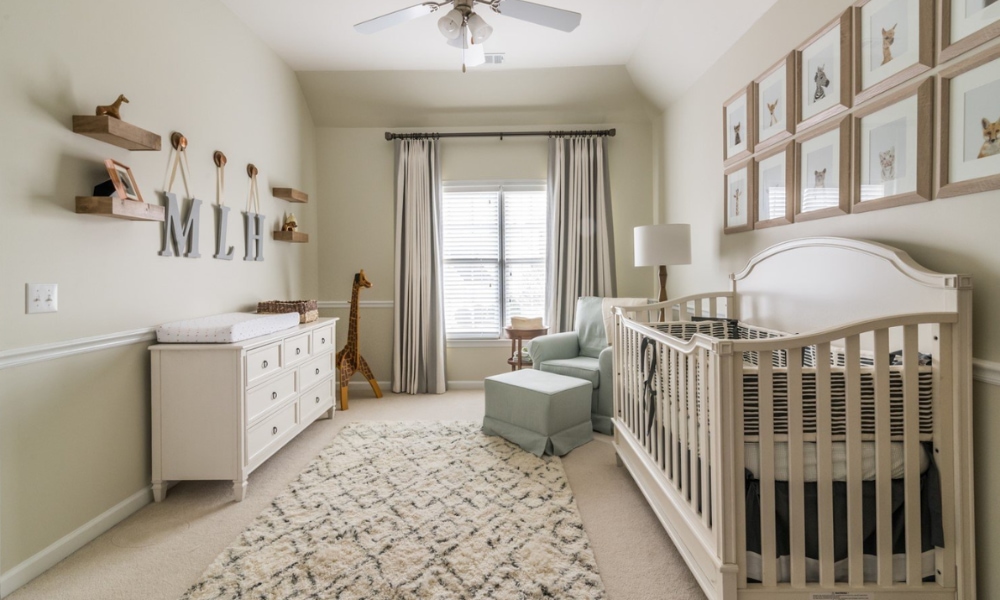
Neutral colors provide timeless backdrops that adapt to changing interests. Beige, cream, and soft brown create calm environments that never go out of style. These colors make rooms appear larger and brighter naturally.
Neutral walls allow colorful decorations, bedding, and toys to stand out beautifully. Parents can completely change room personalities by switching accessories instead of repainting. This approach works perfectly for babies since personality preferences haven’t developed yet.
Neutral colors also solve sibling room-sharing challenges since they appeal to everyone. The investment pays off long-term since frequent repainting becomes unnecessary.
7. Forest Green
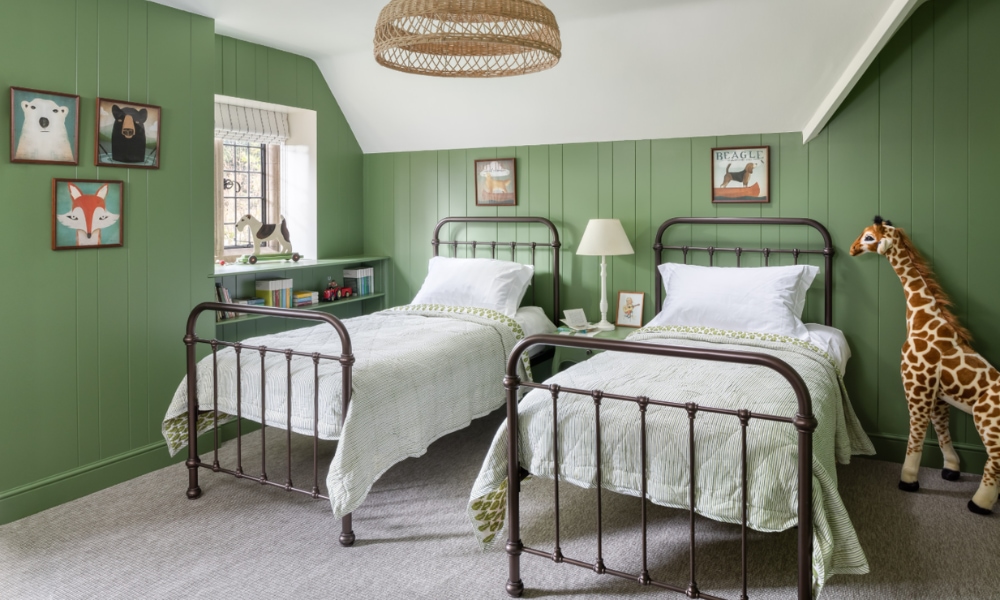
Deep green brings natural elements indoors and creates focused study environments. This color helps children concentrate on homework and reading activities. Forest green walls pair beautifully with wooden furniture for cozy cabin feelings.
The color appeals particularly to nature-loving kids and works well with animal themes. Green creates restful environments that don’t strain eyes during long play sessions. This shade works excellently for boys’ rooms but many girls love it too.
Forest green provides sophisticated alternatives to typical bright kids’ colors. The natural tone grows with children without seeming babyish over time.
Read Also: 14+ Attractive Kids Play Room Ideas to Spark Creativity
8. Ceiling Pop Color
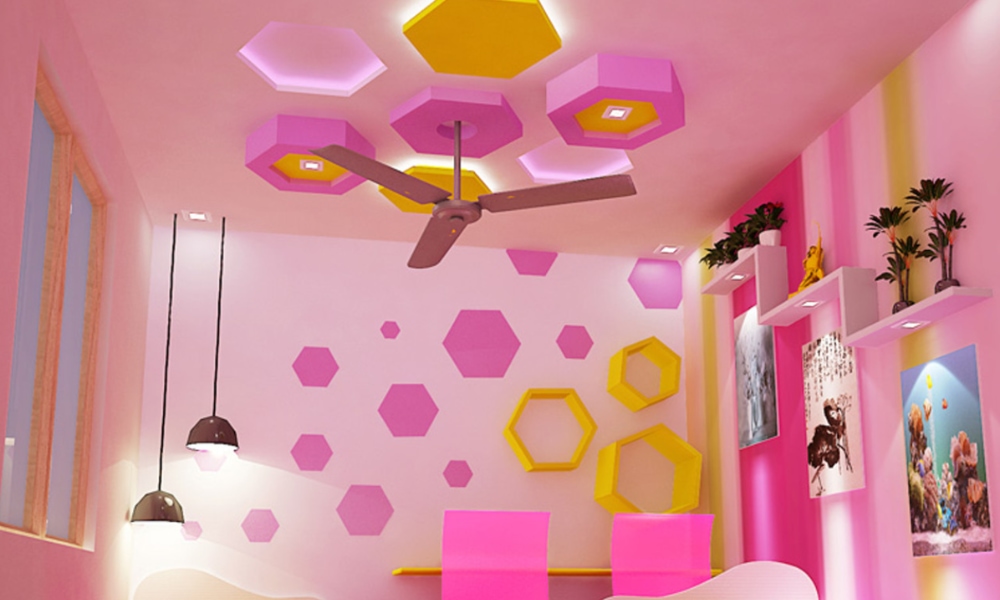
Create surprise elements by painting ceilings bright colors while keeping walls neutral. This technique adds personality without overwhelming entire rooms. Bright orange, yellow, or blue ceilings draw attention upward and make rooms feel taller.
Children love discovering colorful surprises when lying in beds or playing on floors. Ceiling colors work especially well in small rooms that need character. Parents can add painted clouds, stars, or simple patterns for extra interest.
This approach allows easy changes since ceiling paint is simpler than wall redesigns. Colored ceilings become conversation pieces that kids love showing to friends.
9. Two-Tone Walls
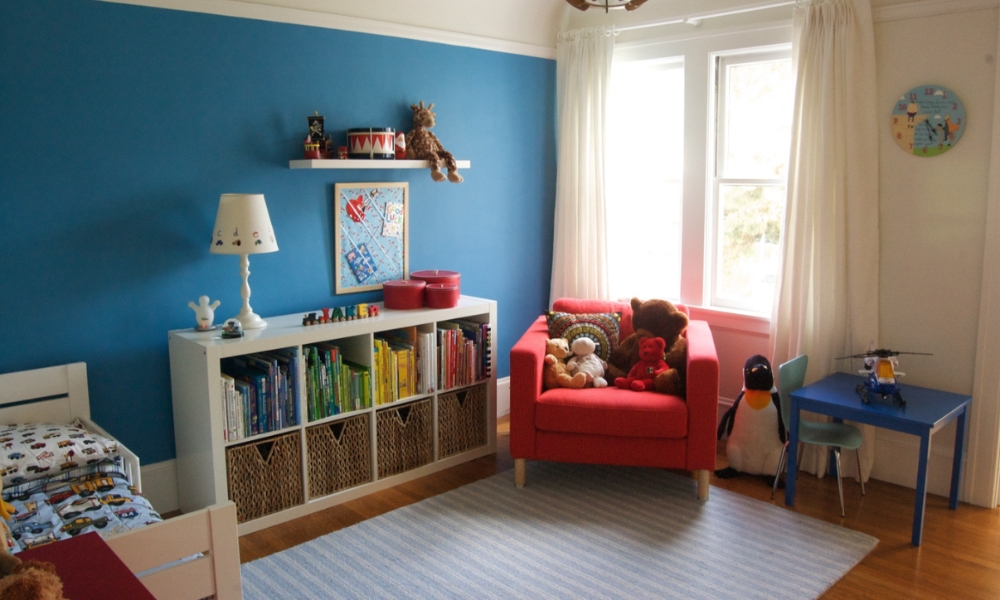
Select two complementary colors and paint different walls each shade. This technique creates visual depth and defines different room areas. Soft pink and cream combinations work beautifully for girls’ rooms. Blue and white create fresh, clean appearances.
Two-tone walls help shared bedrooms feel personalized for each child. The approach also helps separate sleeping areas from play zones visually. Small rooms benefit from this technique since it adds interest without clutter.
Parents can easily modify one color as children’s preferences change. Two-tone painting costs the same as single colors but provides much more impact.
10. Classic White with Accents
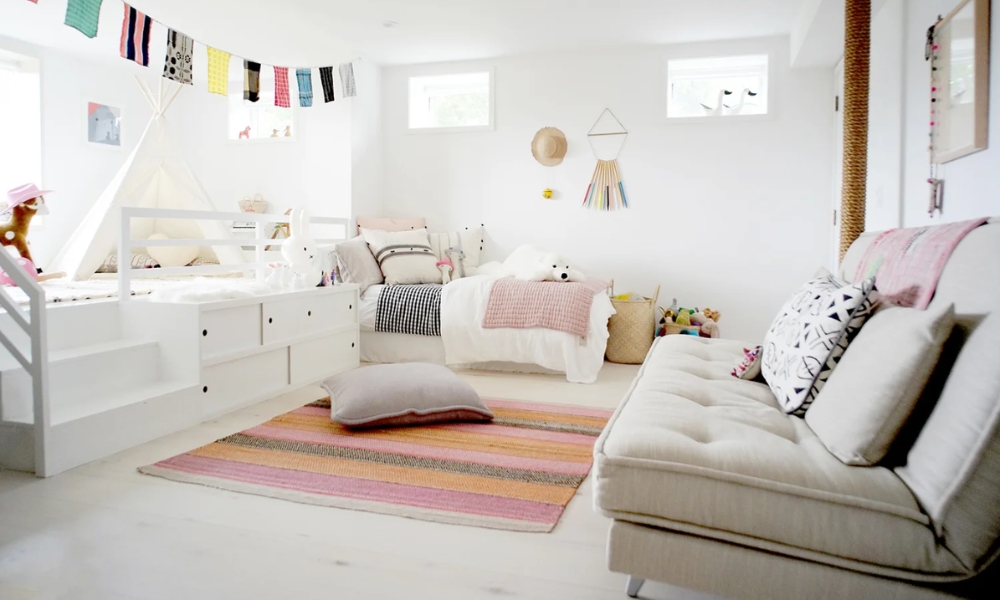
White walls create clean, flexible backdrops that work with any decorating style. Everything appears more vibrant against white backgrounds – pictures, furniture, and toys pop visually. This choice offers ultimate flexibility since room personalities change completely with different accessories.
White makes small rooms appear significantly larger and brighter. The color works from nursery years through teenage phases without looking dated.
Parents can photograph rooms beautifully with white backgrounds. Maintenance becomes easier since white paint touches up seamlessly. This classic choice never conflicts with furniture purchases or gift decorations.
11. Color Blocking
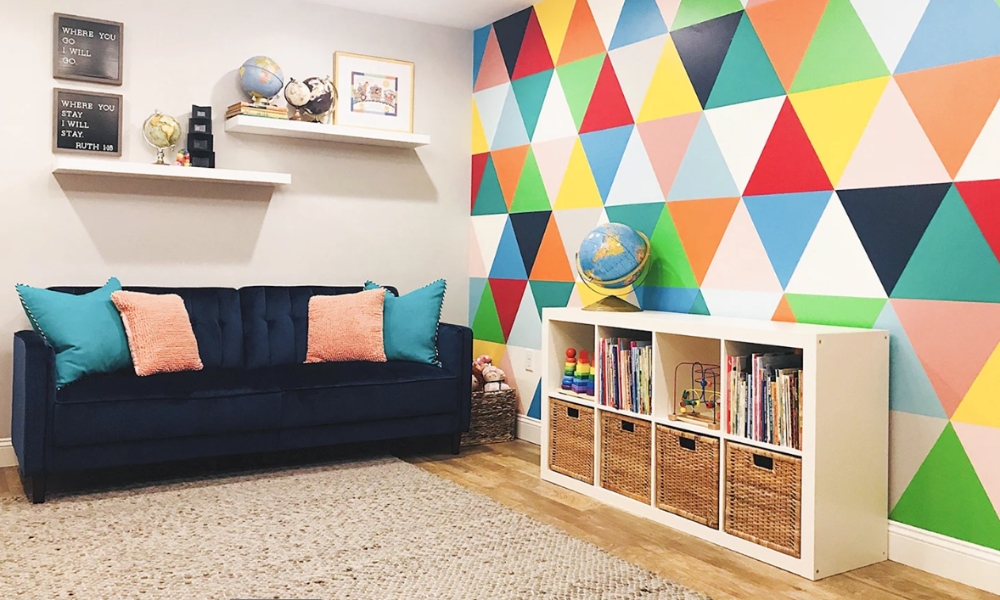
Paint large wall sections in different bright colors for playful, artistic effects. Use painter’s tape to create clean lines between color sections. Red, blue, and yellow blocks create primary color schemes that energetic kids love.
This technique works best in playrooms or spaces dedicated to creative activities. Color blocking might overstimulate bedrooms unless children have difficulty sleeping anyway. The approach creates instant conversation pieces and photo opportunities.
Parents need patience for precise tape application but results look professionally designed. Color blocking appeals especially to artistic children who appreciate bold visual statements.
12. Fun Murals
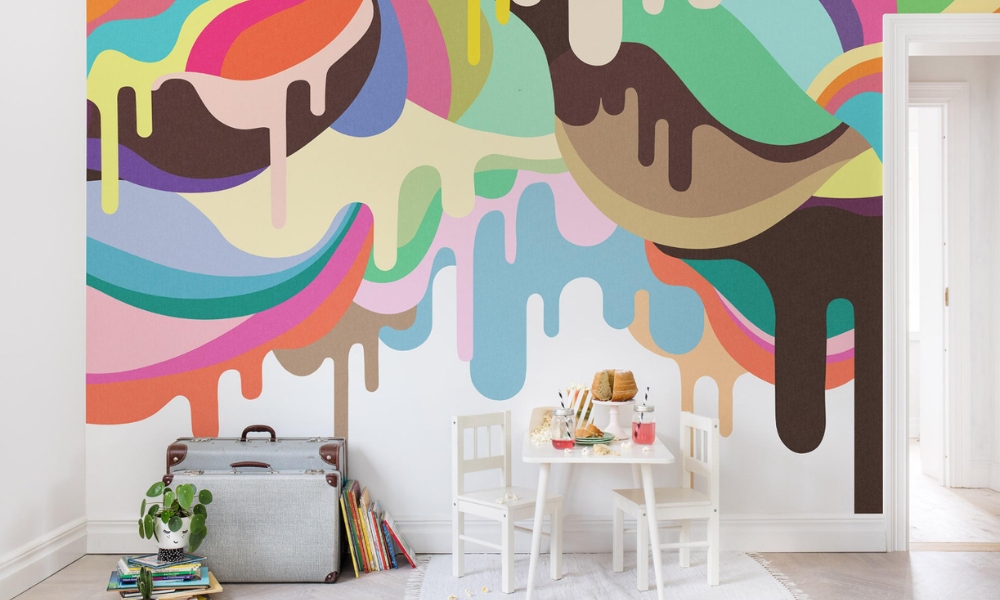
Wall murals transform ordinary rooms into story book settings. Popular themes include underwater scenes, jungle animals, fairy castles, or superhero cities. Murals create unique spaces that children treasure and love showing to friends.
Parents can hire artists or attempt simple designs using stencils and projectors. Even basic shapes look impressive when painted large on walls. Tree silhouettes with seasonal leaf changes create interactive elements.
Murals work especially well on single accent walls to avoid overwhelming rooms. This option appeals to children who want truly personalized spaces unlike anyone else’s room.
13. Pastel Rainbow Walls
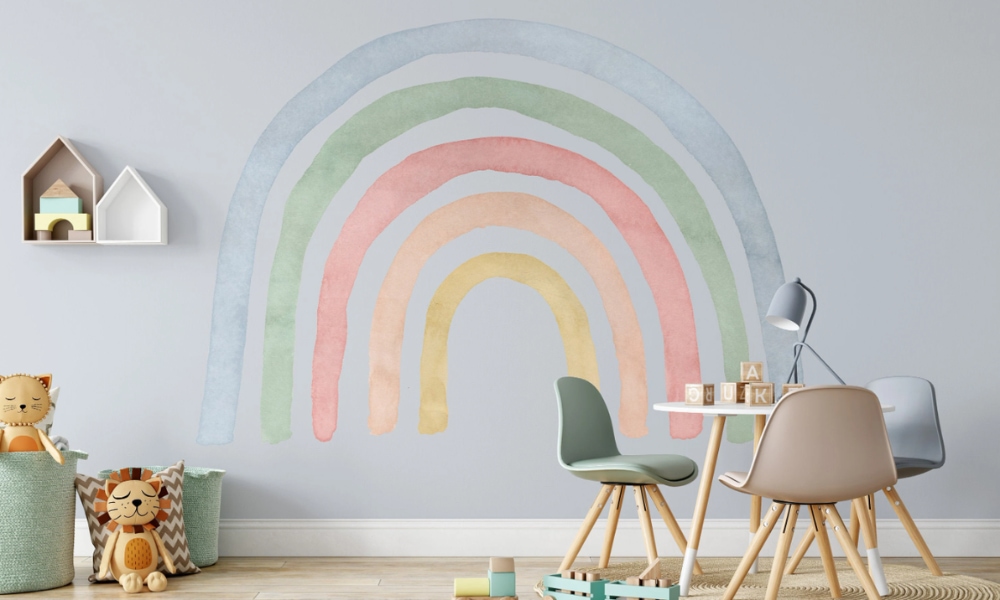
Paint each wall a different soft color – light pink, pale yellow, mint green, and lavender. This creates gentle rainbow effects without harsh brightness. Pastel combinations feel dreamy and magical while remaining calm enough for good sleep.
The technique works particularly well for children who can’t choose single favorite colors. White furniture prevents rooms from becoming too busy or overwhelming. These light shades make small rooms feel airy and spacious.
Pastel rainbows appeal to wide age ranges and don’t look babyish as children grow. Natural lighting changes how different colored walls appear throughout days.
14. Graphic Ceiling Design
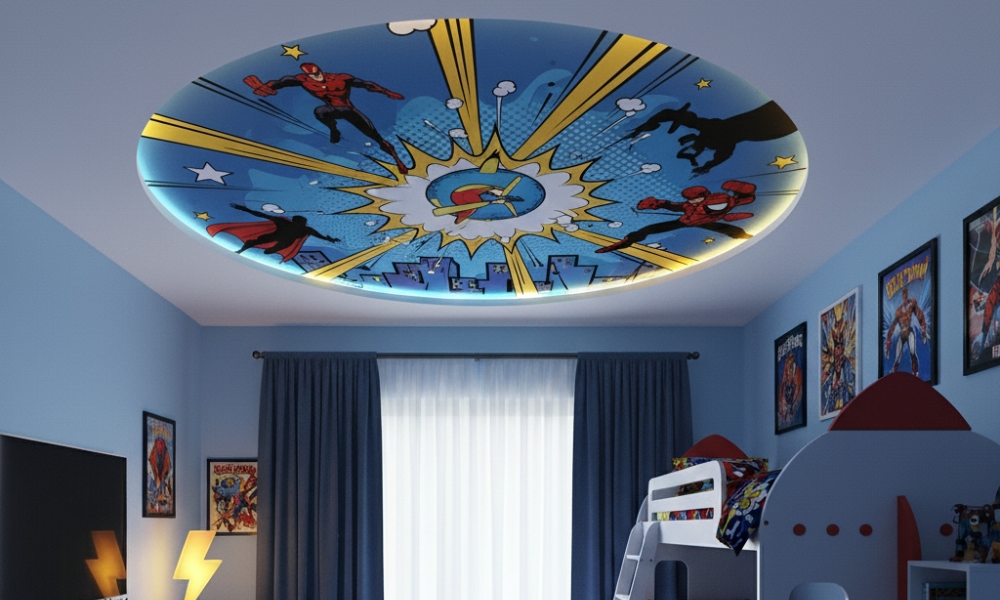
Create patterns on ceilings using geometric shapes, stripes, or polka dots instead of plain white. Diagonal stripes in team colors work well for sports-loving kids. This technique adds personality to rooms with neutral walls.
Children enjoy looking up and discovering ceiling surprises during quiet time. Graphic designs make rooms feel taller and more interesting than standard flat ceilings. The approach costs less than wallpaper but provides similar visual impact.
Small rooms especially benefit from upward visual interest. Ceiling patterns become focal points that friends always notice and comment about.
15. DIY Painted Wallpaper
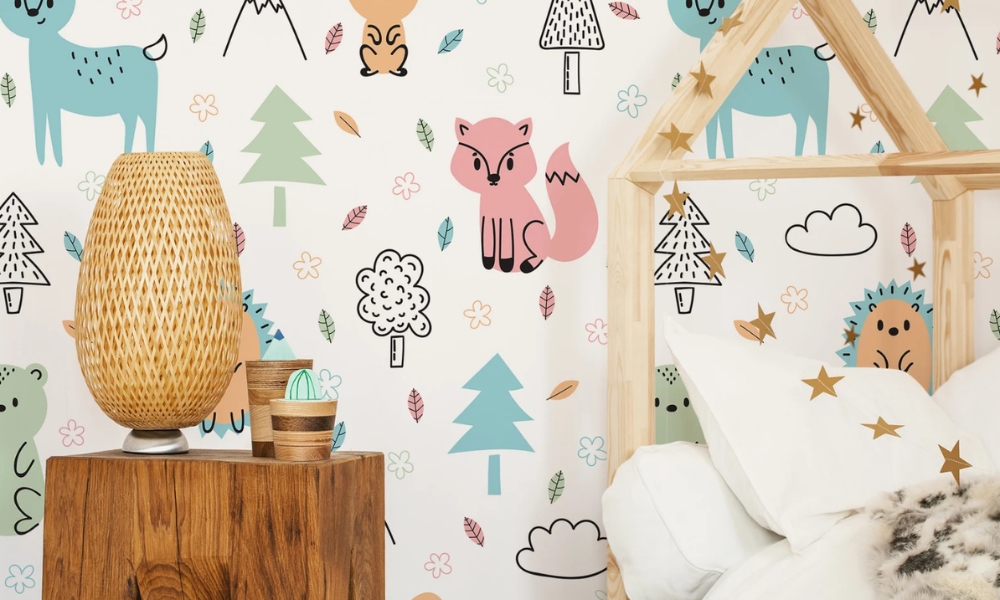
Create custom wallpaper effects using paint, stencils, and tape instead of expensive commercial products. Polka dots applied with round sponges create fun, affordable patterns. Vertical stripes make rooms appear taller while horizontal stripes add width.
This technique allows complete customization of colors and patterns. Mistakes can be painted over and redone easily unlike permanent wallpaper. Children can help with simple patterns and feel proud of contributing to room designs.
DIY approaches cost significantly less than professional wallpaper installation. The technique works especially well for rental properties where permanent changes aren’t allowed.
Conclusion
Colors play a big role in kids bedrooms. Bright colors make children happy and playful. Soft colors make them calm and relaxed. Small kids rooms, baby rooms, and shared rooms can all benefit from thoughtful color choices.
Using the right shades for a boy or girl’s room color ideas can make the room cozy, fun, and creative. Try these 15 cute and trendy kids room color ideas to make your child’s space exciting, happy, and special every day.
